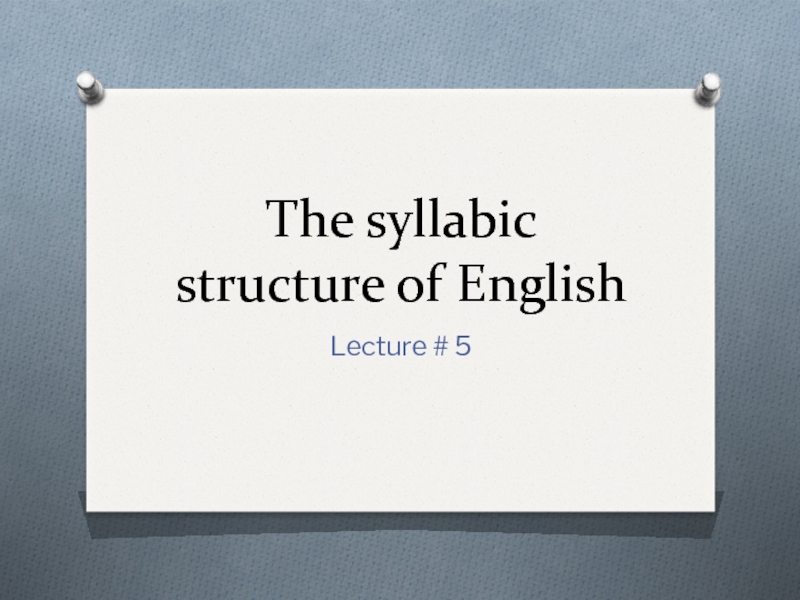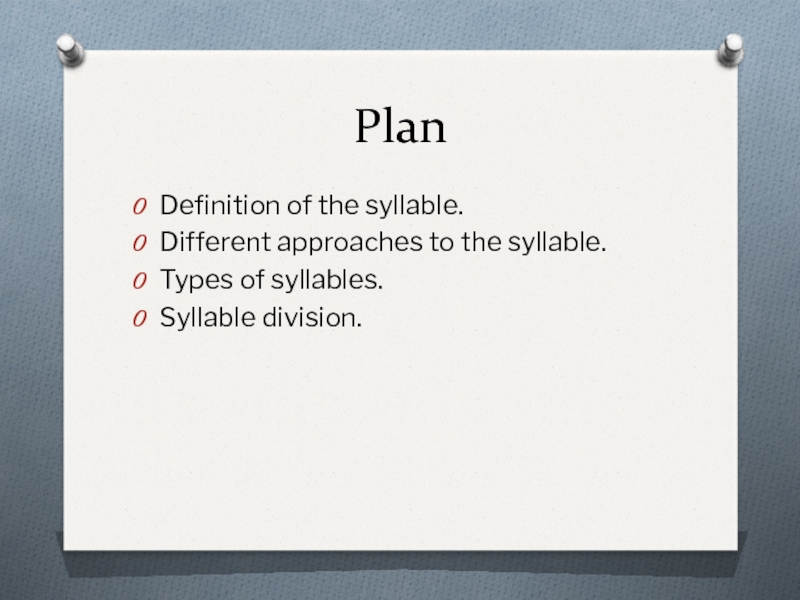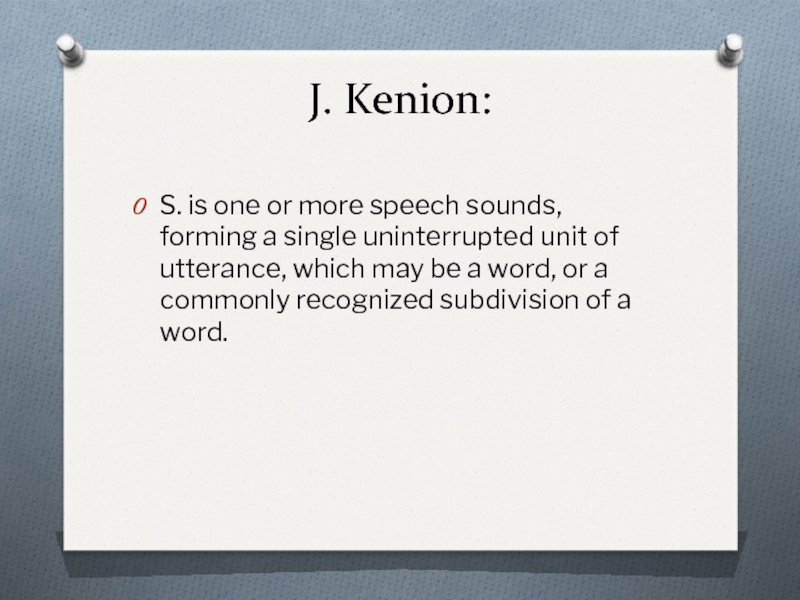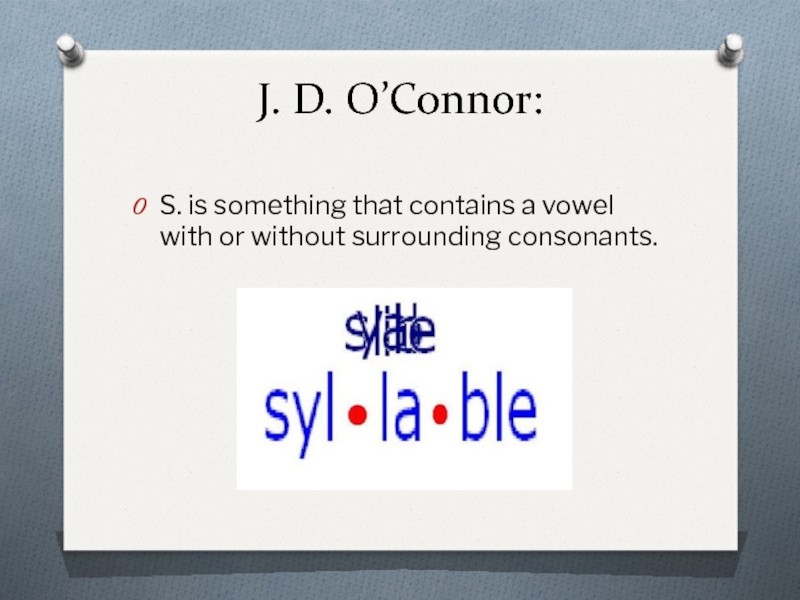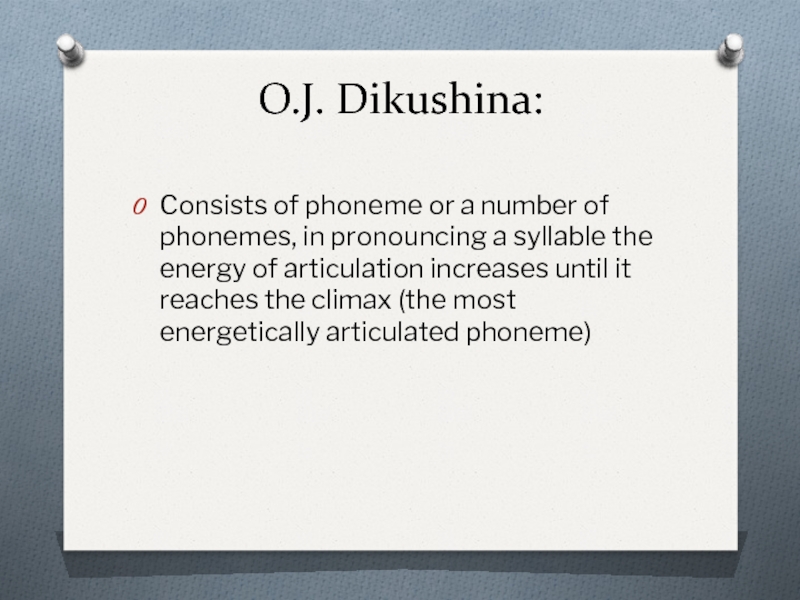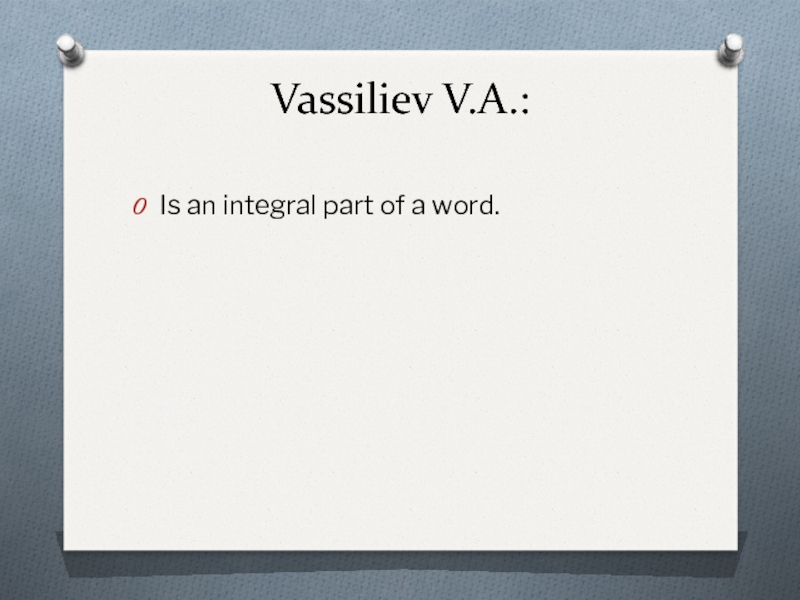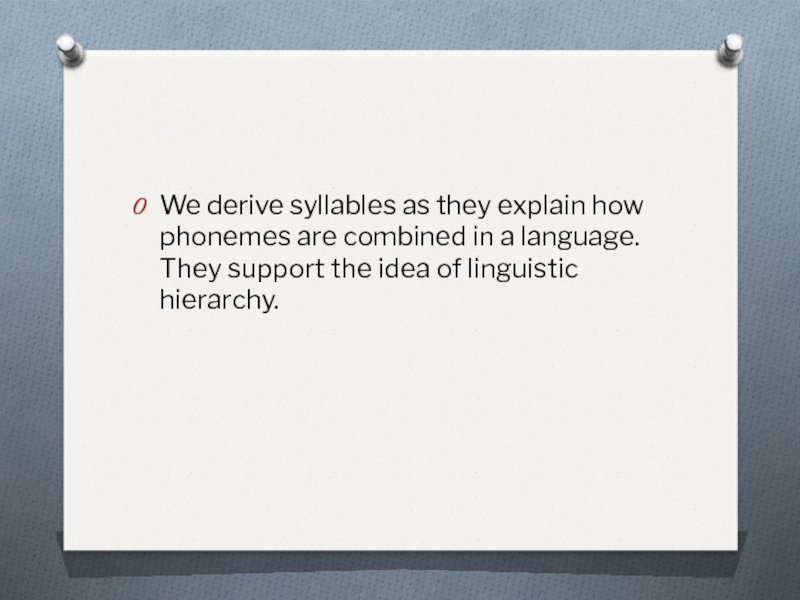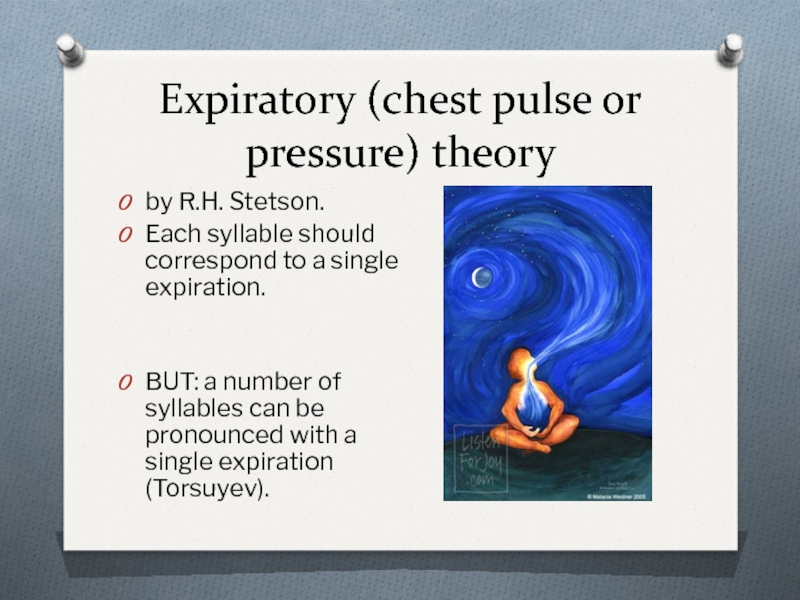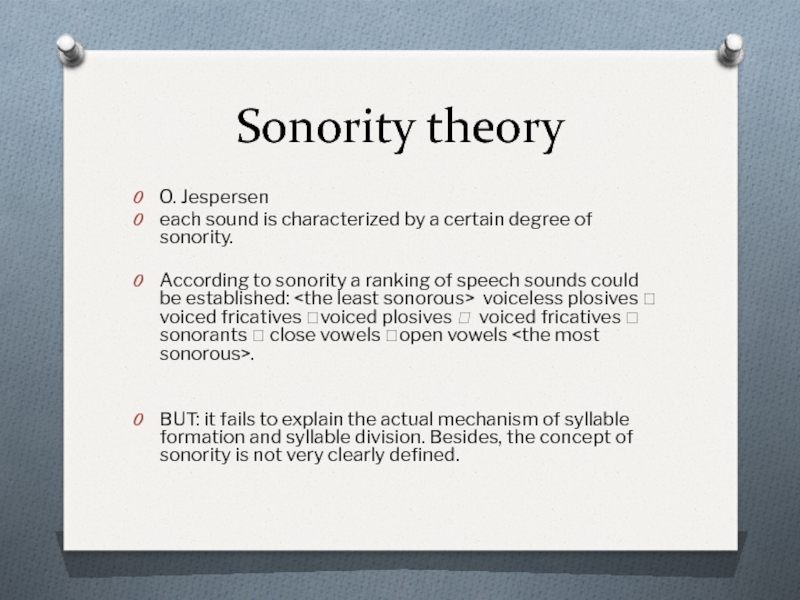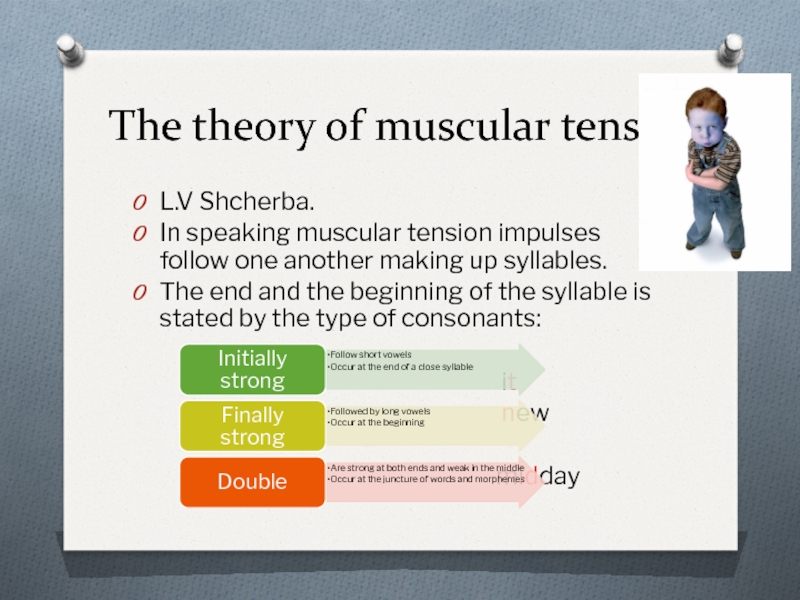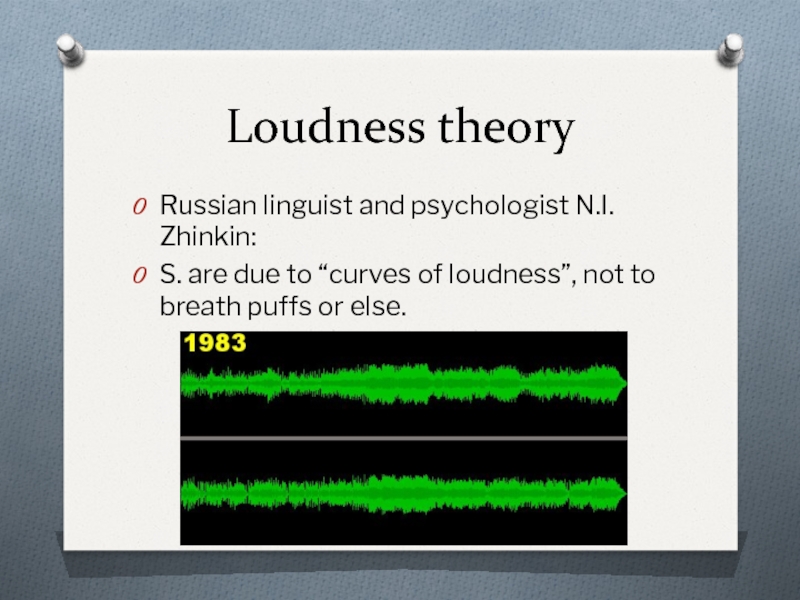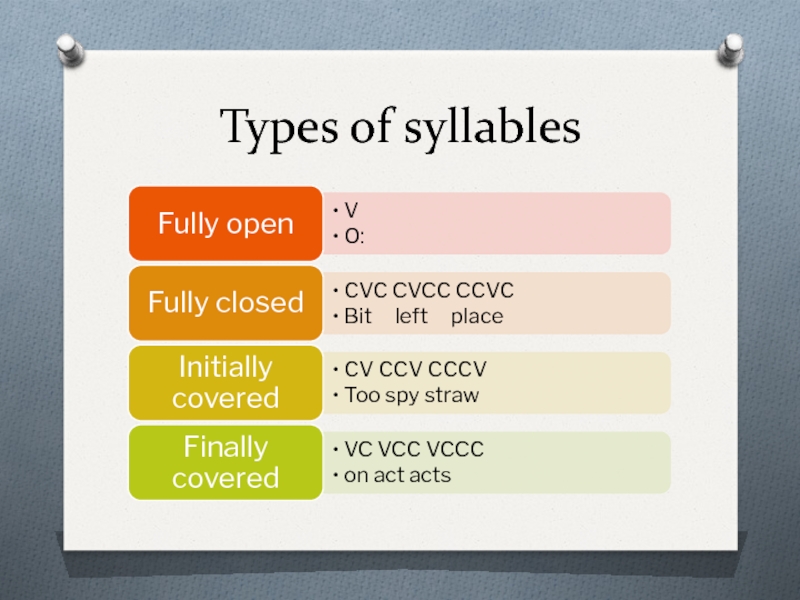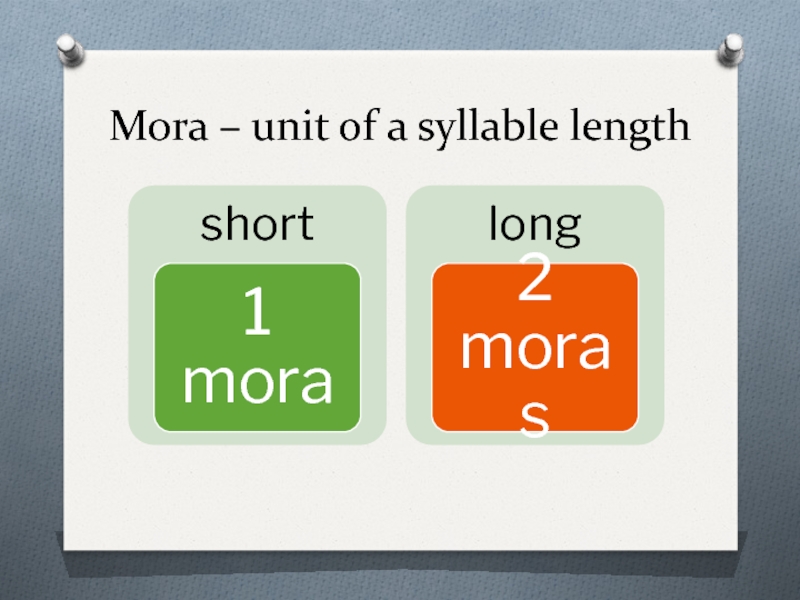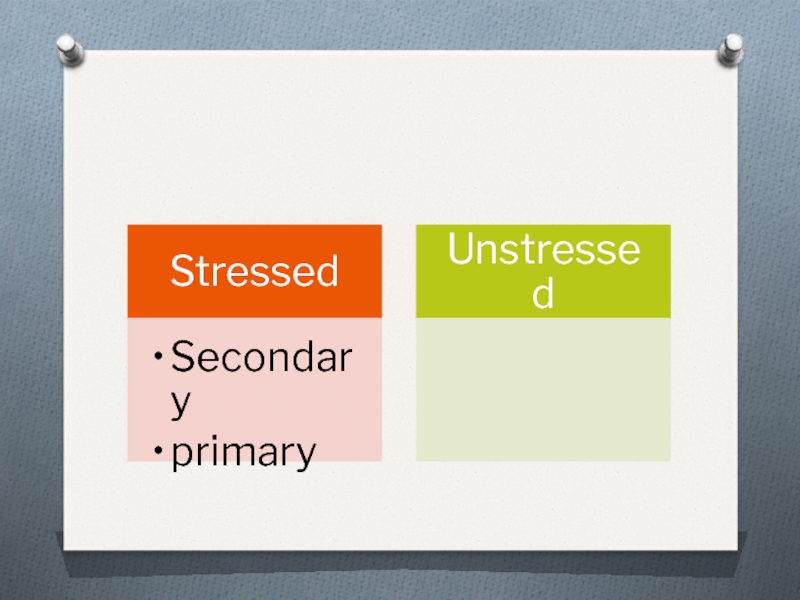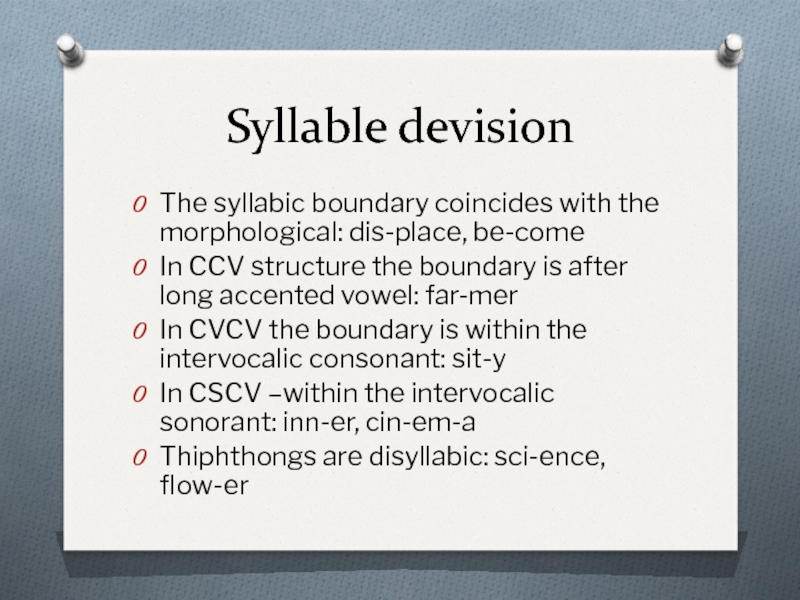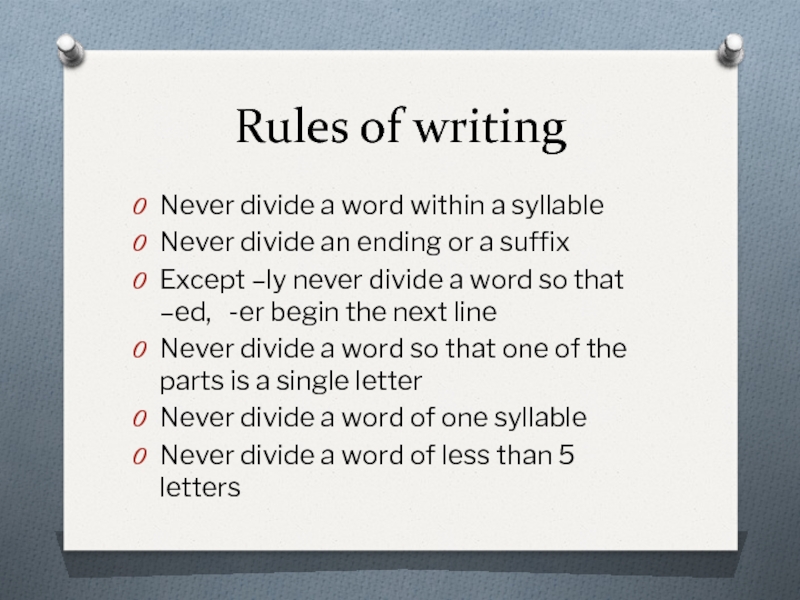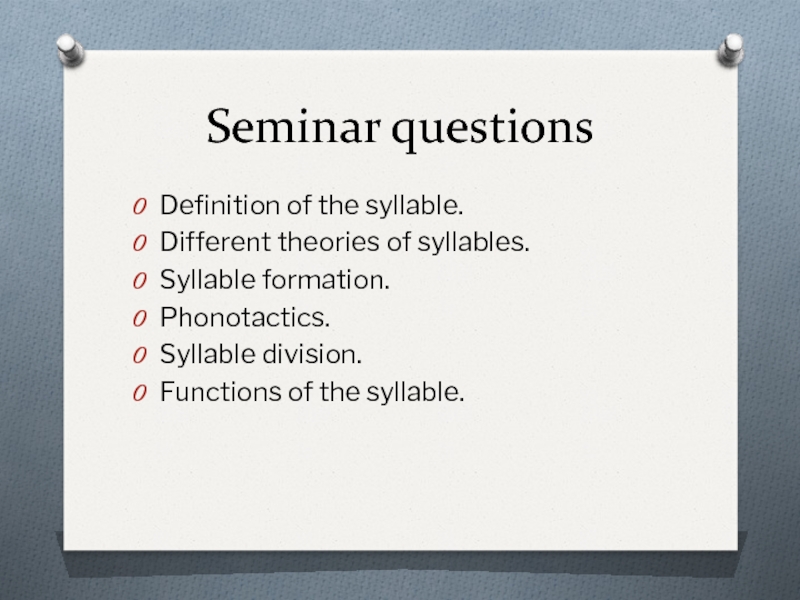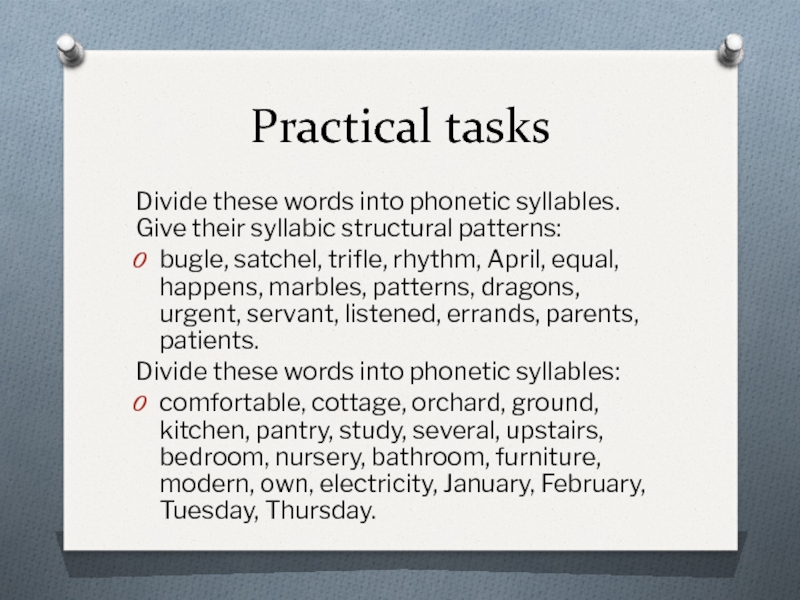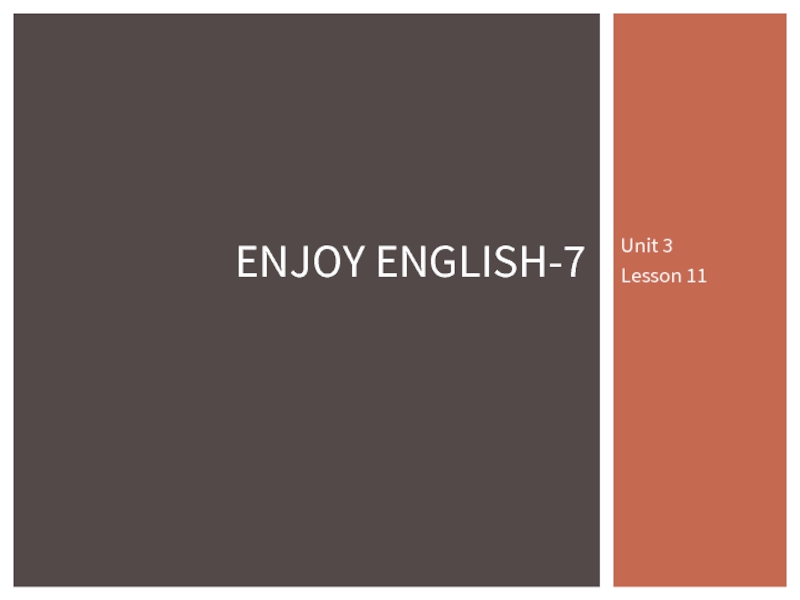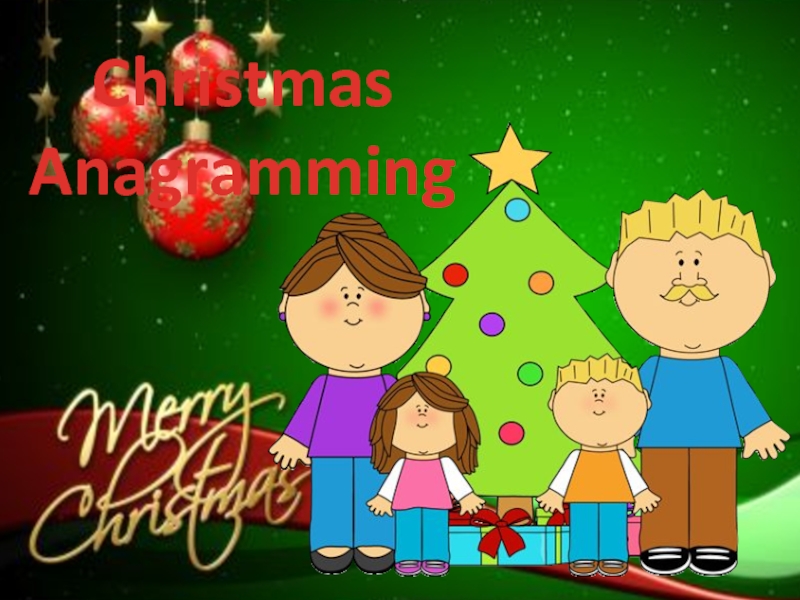- Главная
- Разное
- Дизайн
- Бизнес и предпринимательство
- Аналитика
- Образование
- Развлечения
- Красота и здоровье
- Финансы
- Государство
- Путешествия
- Спорт
- Недвижимость
- Армия
- Графика
- Культурология
- Еда и кулинария
- Лингвистика
- Английский язык
- Астрономия
- Алгебра
- Биология
- География
- Детские презентации
- Информатика
- История
- Литература
- Маркетинг
- Математика
- Медицина
- Менеджмент
- Музыка
- МХК
- Немецкий язык
- ОБЖ
- Обществознание
- Окружающий мир
- Педагогика
- Русский язык
- Технология
- Физика
- Философия
- Химия
- Шаблоны, картинки для презентаций
- Экология
- Экономика
- Юриспруденция
The syllabic structure of English презентация
Содержание
- 1. The syllabic structure of English
- 2. Plan Definition of the syllable.
- 3. J. Kenion: S. is one or
- 4. J. D. O’Connor: S. is
- 5. O.J. Dikushina: Consists of phoneme or
- 6. Vassiliev V.A.: Is an integral part of a word.
- 7. We derive syllables as they explain
- 8. Vowel theory There are as many syllables,
- 9. Expiratory (chest pulse or pressure) theory
- 10. Sonority theory O. Jespersen each sound
- 11. The theory of muscular tension L.V Shcherba.
- 12. Loudness theory Russian linguist and psychologist
- 13. Types of syllables
- 14. Mora – unit of a syllable length
- 16. Syllable devision The syllabic boundary coincides with
- 17. Rules of writing Never divide a word
- 18. Seminar questions Definition of the syllable.
- 19. Practical tasks Divide these words into phonetic
Слайд 2Plan
Definition of the syllable.
Different approaches to the syllable.
Types
of syllables.
Syllable division.
Syllable division.
Слайд 3J. Kenion:
S. is one or more speech sounds, forming a single
uninterrupted unit of utterance, which may be a word, or a commonly recognized subdivision of a word.
Слайд 4J. D. O’Connor:
S. is something that contains a vowel with
or without surrounding consonants.
Слайд 5O.J. Dikushina:
Consists of phoneme or a number of phonemes, in pronouncing
a syllable the energy of articulation increases until it reaches the climax (the most energetically articulated phoneme)
Слайд 7
We derive syllables as they explain how phonemes are combined in
a language. They support the idea of linguistic hierarchy.
Слайд 9Expiratory (chest pulse or pressure) theory
by R.H. Stetson.
Each syllable
should correspond to a single expiration.
BUT: a number of syllables can be pronounced with a single expiration (Torsuyev).
BUT: a number of syllables can be pronounced with a single expiration (Torsuyev).
Слайд 10Sonority theory
O. Jespersen
each sound is characterized by a certain degree
of sonority.
According to sonority a ranking of speech sounds could be established: voiceless plosives ? voiced fricatives ?voiced plosives ? voiced fricatives ? sonorants ? close vowels ?open vowels .
BUT: it fails to explain the actual mechanism of syllable formation and syllable division. Besides, the concept of sonority is not very clearly defined.
According to sonority a ranking of speech sounds could be established:
BUT: it fails to explain the actual mechanism of syllable formation and syllable division. Besides, the concept of sonority is not very clearly defined.
Слайд 11The theory of muscular tension
L.V Shcherba.
In speaking muscular tension impulses
follow one another making up syllables.
The end and the beginning of the syllable is stated by the type of consonants:
it
new
midday
The end and the beginning of the syllable is stated by the type of consonants:
it
new
midday
Слайд 12Loudness theory
Russian linguist and psychologist N.I. Zhinkin:
S. are due to
“curves of loudness”, not to breath puffs or else.
Слайд 16Syllable devision
The syllabic boundary coincides with the morphological: dis-place, be-come
In CCV
structure the boundary is after long accented vowel: far-mer
In CVCV the boundary is within the intervocalic consonant: sit-y
In CSCV –within the intervocalic sonorant: inn-er, cin-em-a
Thiphthongs are disyllabic: sci-ence, flow-er
In CVCV the boundary is within the intervocalic consonant: sit-y
In CSCV –within the intervocalic sonorant: inn-er, cin-em-a
Thiphthongs are disyllabic: sci-ence, flow-er
Слайд 17Rules of writing
Never divide a word within a syllable
Never divide an
ending or a suffix
Except –ly never divide a word so that –ed, -er begin the next line
Never divide a word so that one of the parts is a single letter
Never divide a word of one syllable
Never divide a word of less than 5 letters
Except –ly never divide a word so that –ed, -er begin the next line
Never divide a word so that one of the parts is a single letter
Never divide a word of one syllable
Never divide a word of less than 5 letters
Слайд 18Seminar questions
Definition of the syllable.
Different theories of syllables.
Syllable formation.
Phonotactics.
Syllable division.
Functions of the syllable.
Слайд 19Practical tasks
Divide these words into phonetic syllables. Give their syllabic structural
patterns:
bugle, satchel, trifle, rhythm, April, equal, happens, marbles, patterns, dragons, urgent, servant, listened, errands, parents, patients.
Divide these words into phonetic syllables:
comfortable, cottage, orchard, ground, kitchen, pantry, study, several, upstairs, bedroom, nursery, bathroom, furniture, modern, own, electricity, January, February, Tuesday, Thursday.
bugle, satchel, trifle, rhythm, April, equal, happens, marbles, patterns, dragons, urgent, servant, listened, errands, parents, patients.
Divide these words into phonetic syllables:
comfortable, cottage, orchard, ground, kitchen, pantry, study, several, upstairs, bedroom, nursery, bathroom, furniture, modern, own, electricity, January, February, Tuesday, Thursday.
